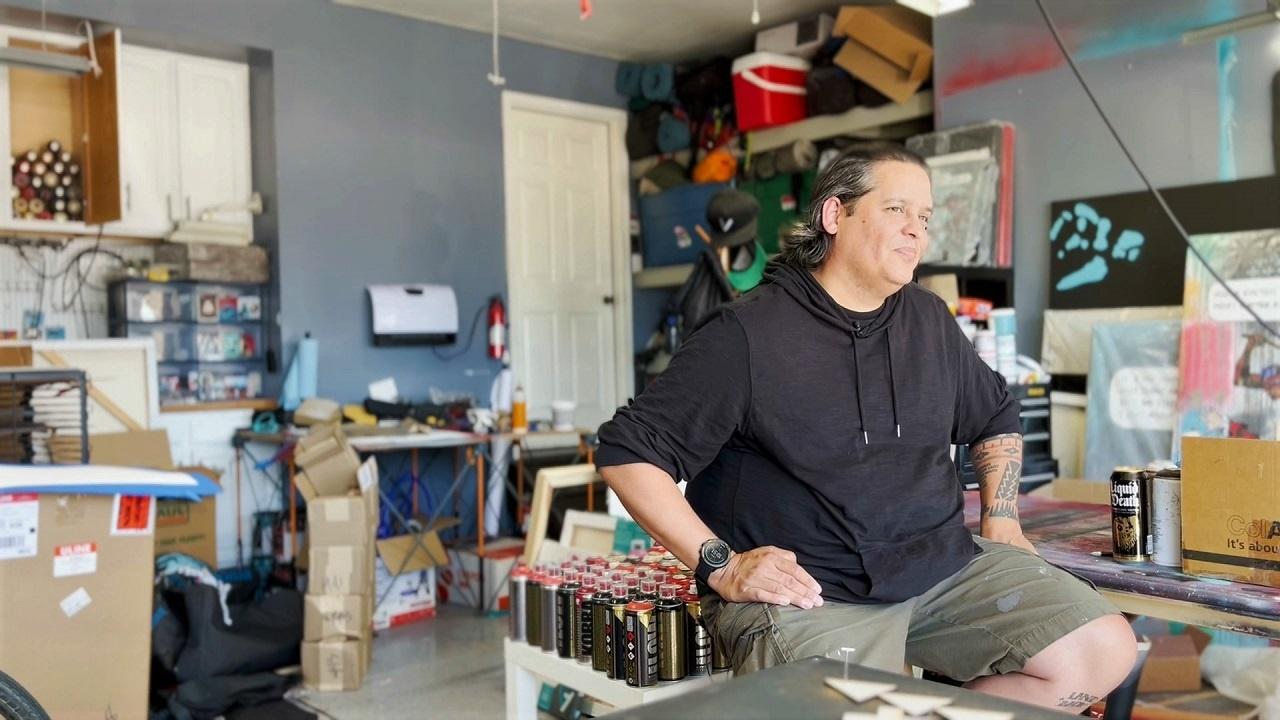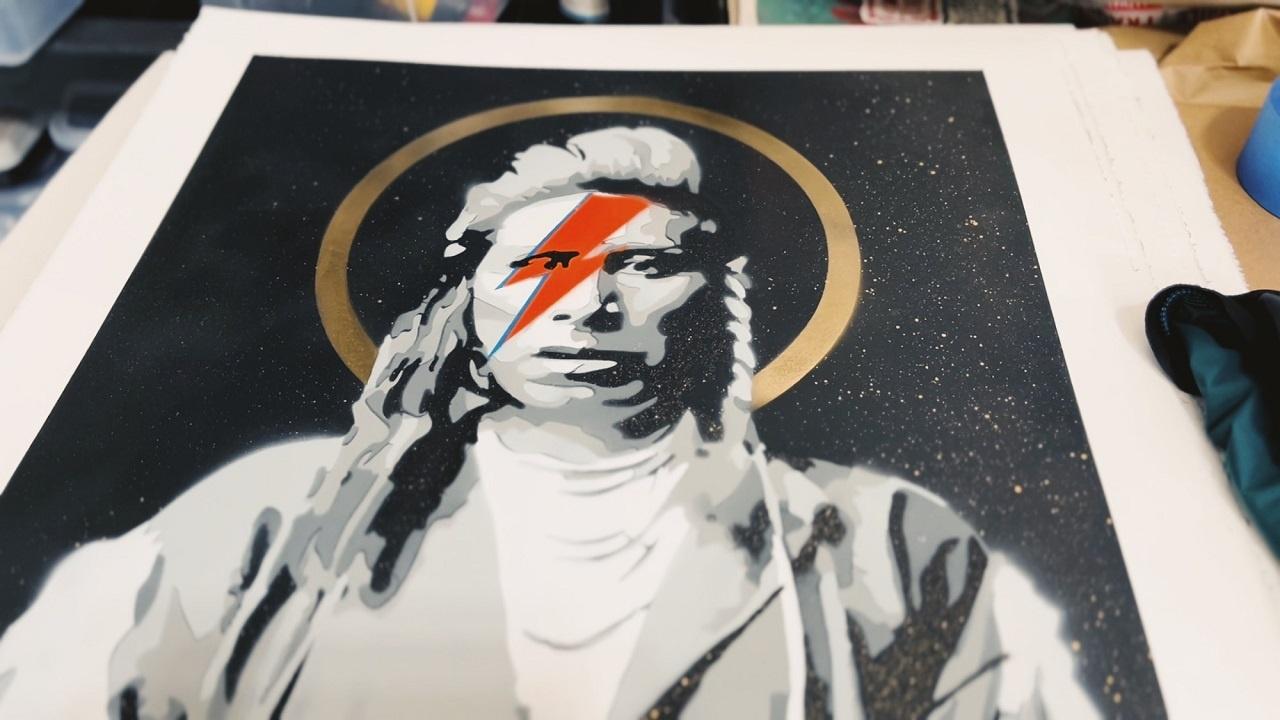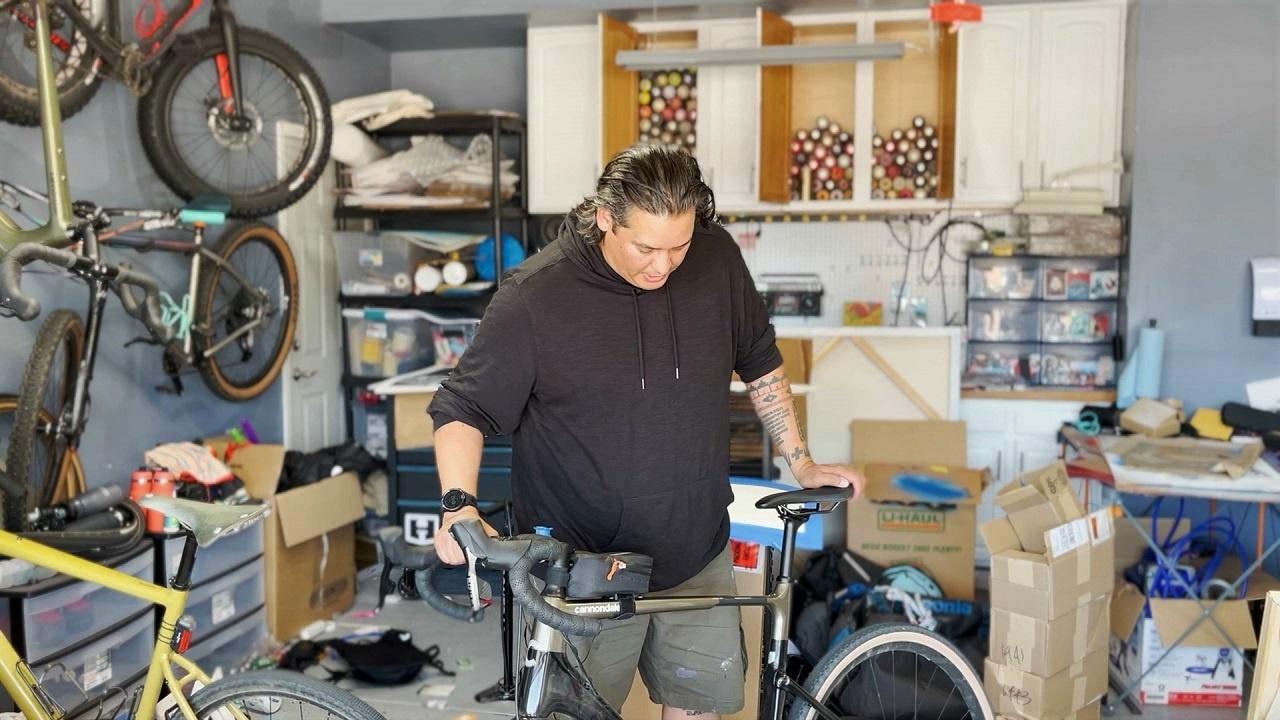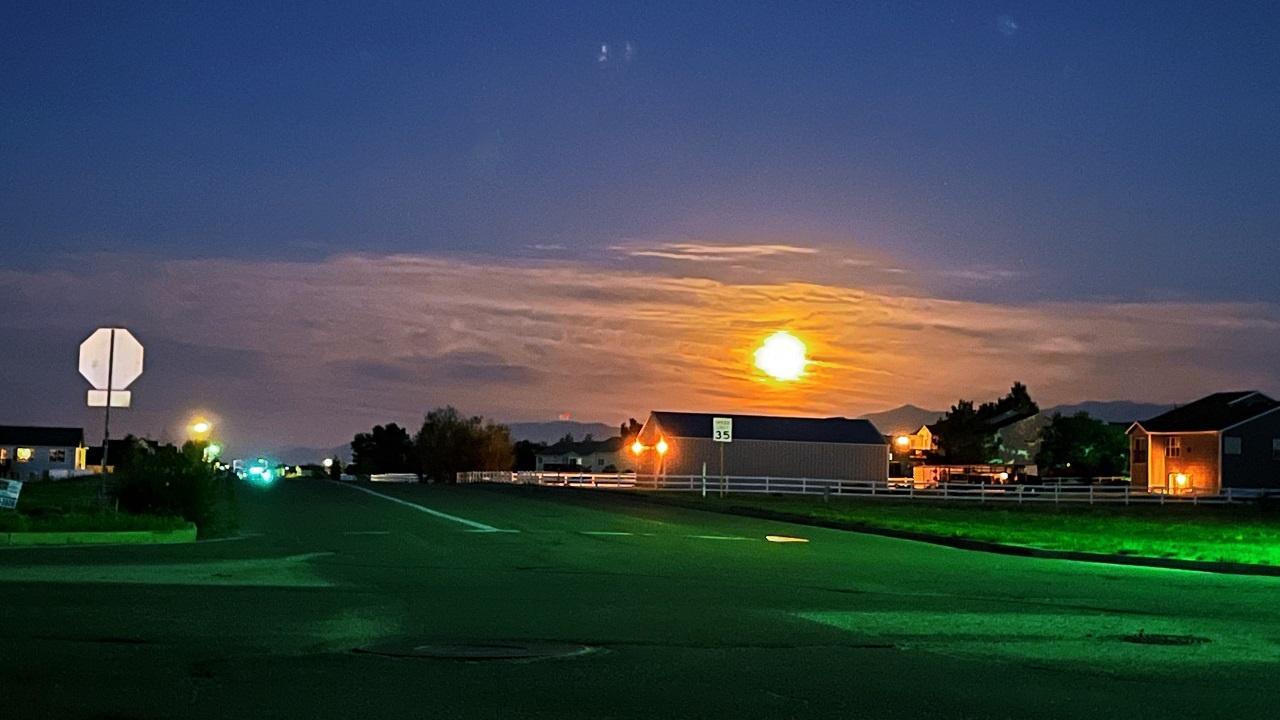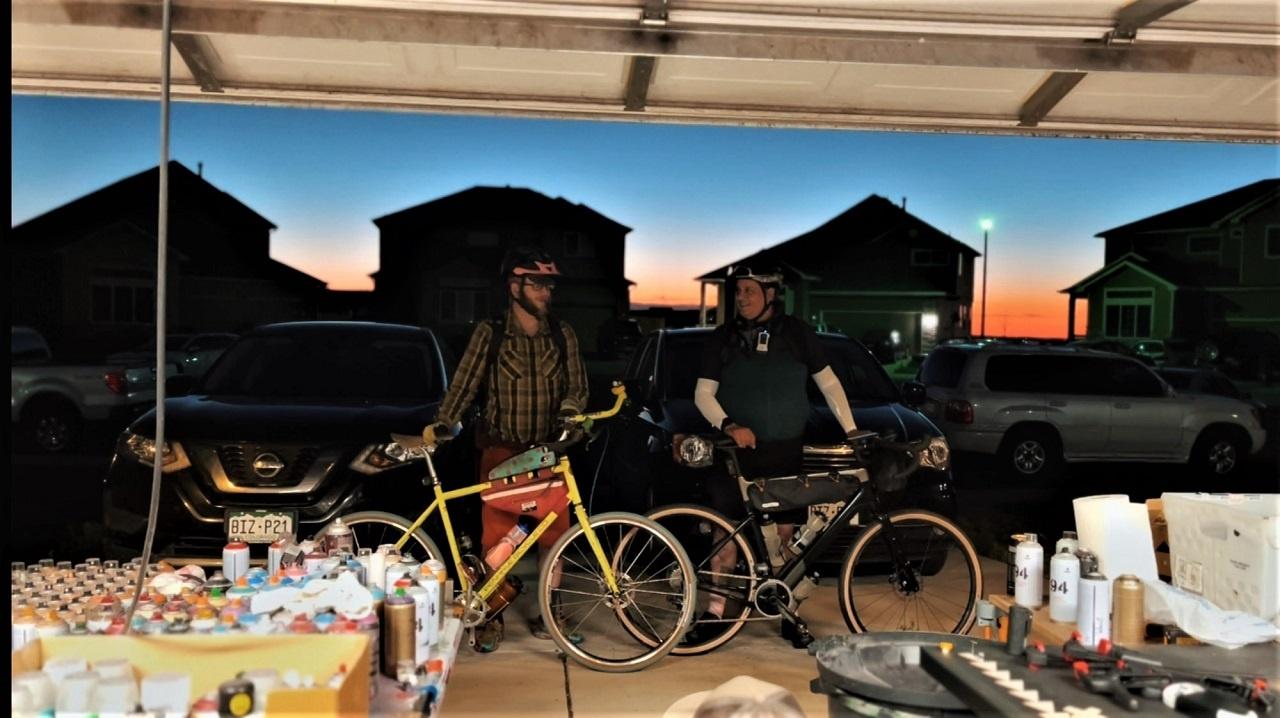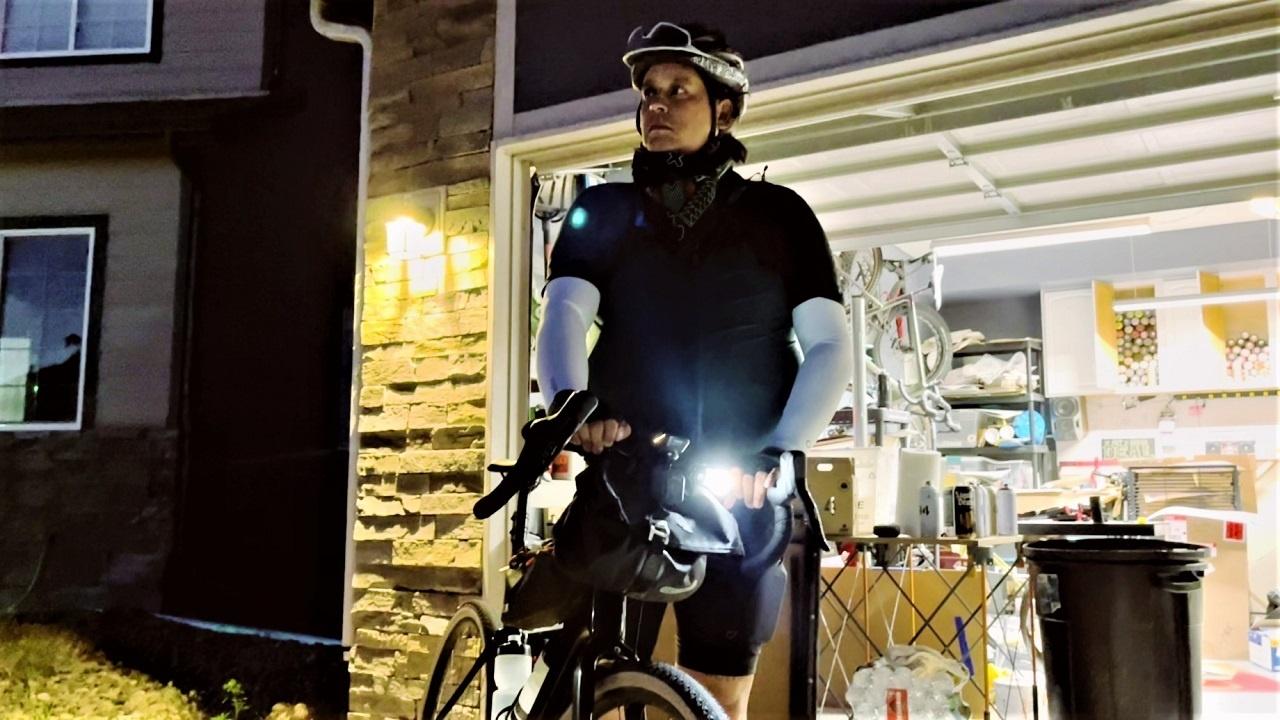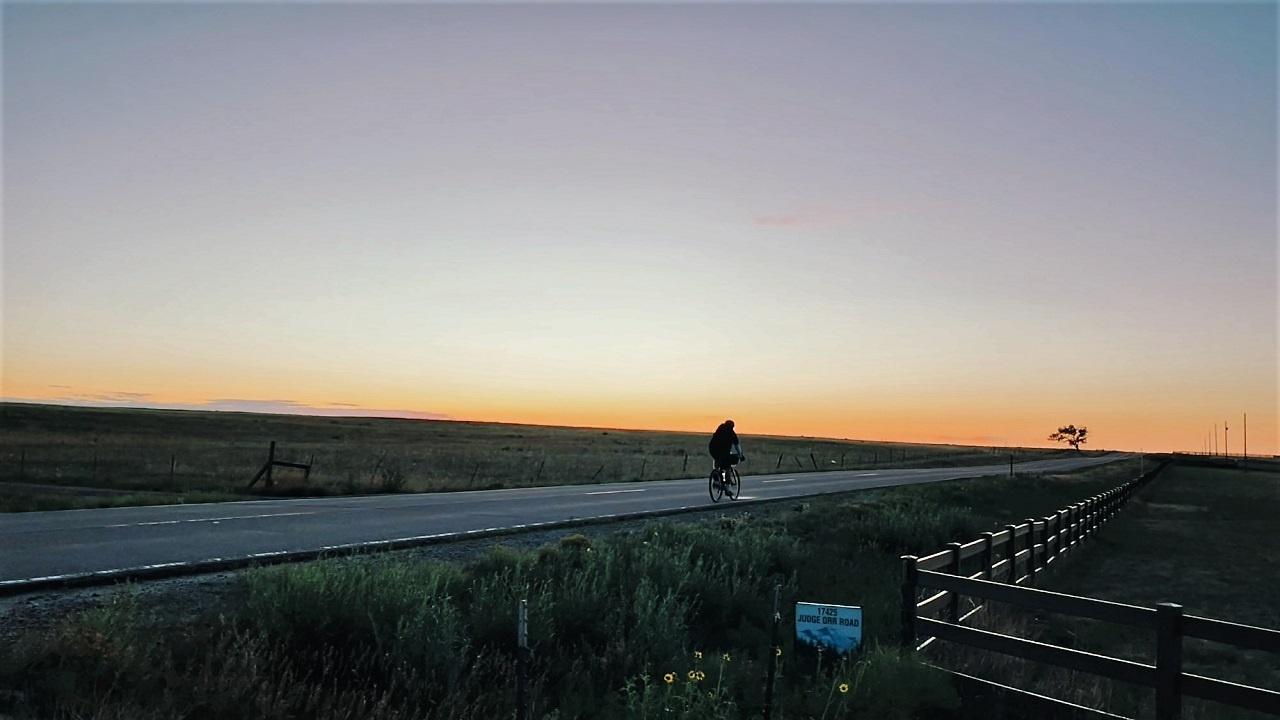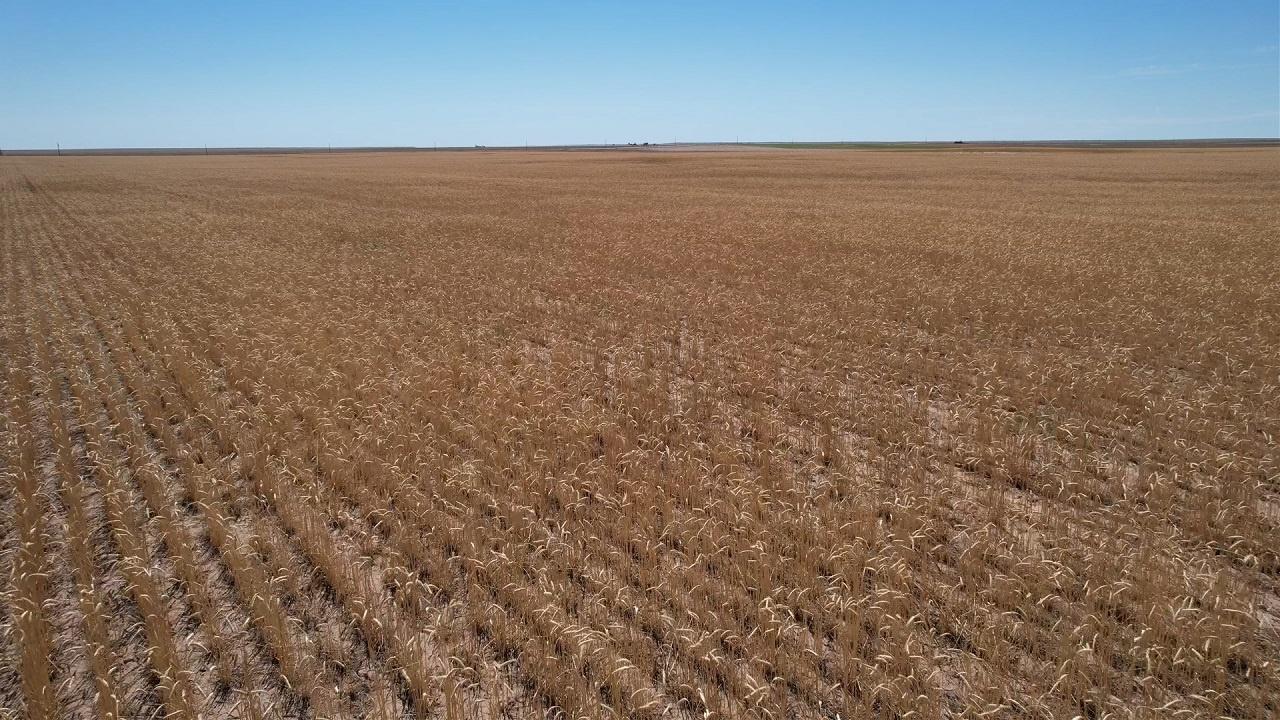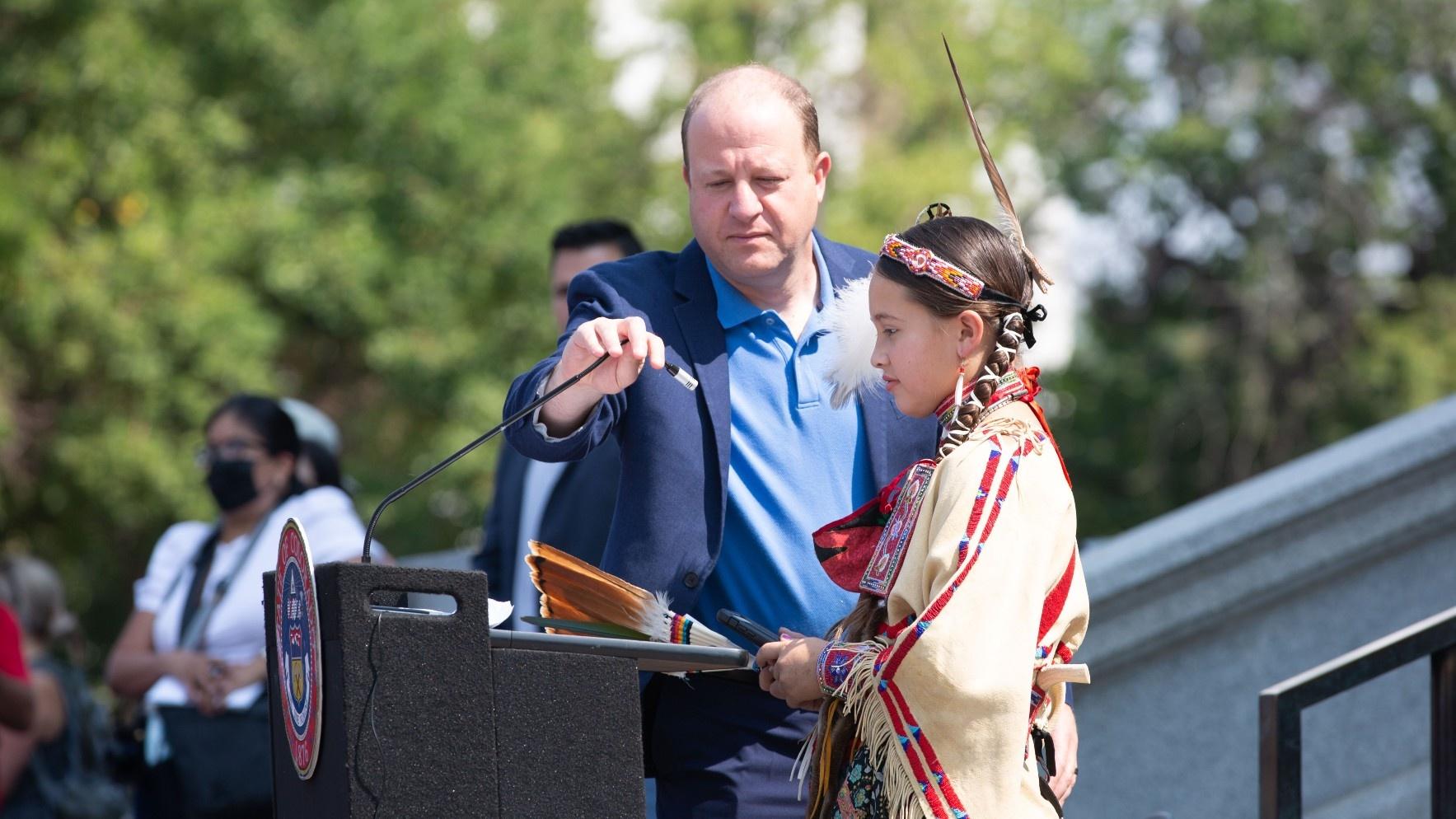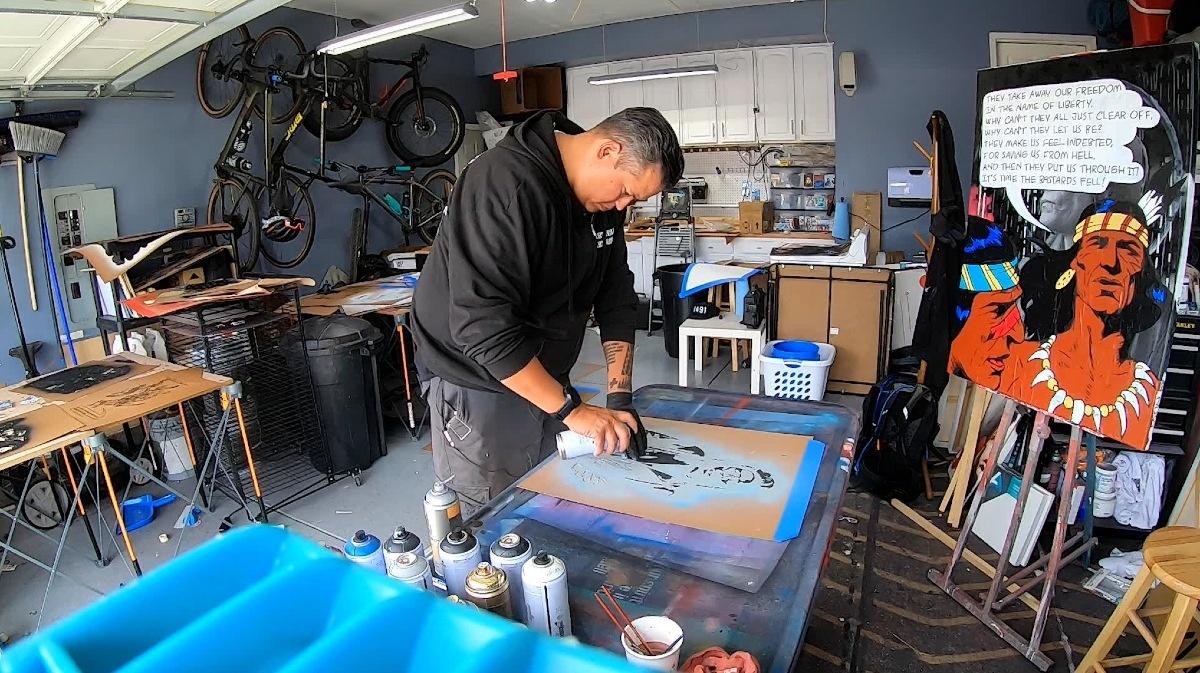At 4:45 on this July morning, crickets lulled along the walkway, serenely welcoming the porch light before sunrise. A small caravan of support gathered, including artist and filmmaker Steven Yazzie and Emmanual Gallery director and curator Jeff Lambson.
The plan was to follow Deal in their vehicle with plenty of snacks and water. Dave Nice, otherwise known as “Fixie Dave” — Deal’s ally and fixed-gear-riding bike mechanic — would cycle alongside him. Nice spends his days at Pedal Station, a community bike center, lending his talent to Kids on Bikes, a Colorado Springs community mainstay that aims to get more kids involved in cycling.
In the blink of an eye, the vehicle was loaded, the walkie talkies tested, and Deal and Nice took off down Deal’s cul-de-sac before speeding away. They round out of the neighborhood as dawn broke over the horizon, soon going from the suburbs out toward the vast prairie.
As the sun rose, the chill of the high desert summer air evaporated into the asphalt, which soon turned to gravel for Deal and his crew. Sage brush bended to the low-rumbling wind. Prairie flowers in full bloom beg to be appreciated as semi-trucks rocket few and far between through sparse terrain.
Later, approaching wheat territory, trucks carrying grain rode almost back-to-back, more like a train, across the plain horizon, leaving one to marvel at the physics of “dry farming.” The regional agricultural method relies solely on precipitation — crops are not supplemented with any other irrigation throughout the growing season.
“At first, we were booking,” said Deal of the early morning hours of the ride. “I think a lot of it has to do with how cool it was, being fresh in the morning. A lot was downhill, and most of the climbing were short climbs that you could just kind of push through.”
“The climbs got increasingly longer,” he said. “A little after the 50-mile point things started getting really, really hot.” Bike tires sunk in the sand, fishtailing the bikes. “I started to notice that my ability to stay on a constant path was becoming increasingly difficult,” Deal said.
“I was struck by really just how incredibly harsh the landscape is,” Deal said of the ride. “This is not an obvious destination. You really have to put in some work to find this place. Most people don't even know this is here. You have to want to come here to come here.”
Across the cattle, ranch and farmlands of rural eastern Colorado, place names and counties play ping-pong: Cheyenne, Lincoln, Kiowa, Kit Carson. Turning off past Eads, a confused GPS and light signage lead the car over miles of newly graded gravel to the gates of the Sand Creek Massacre National Historic Site.



